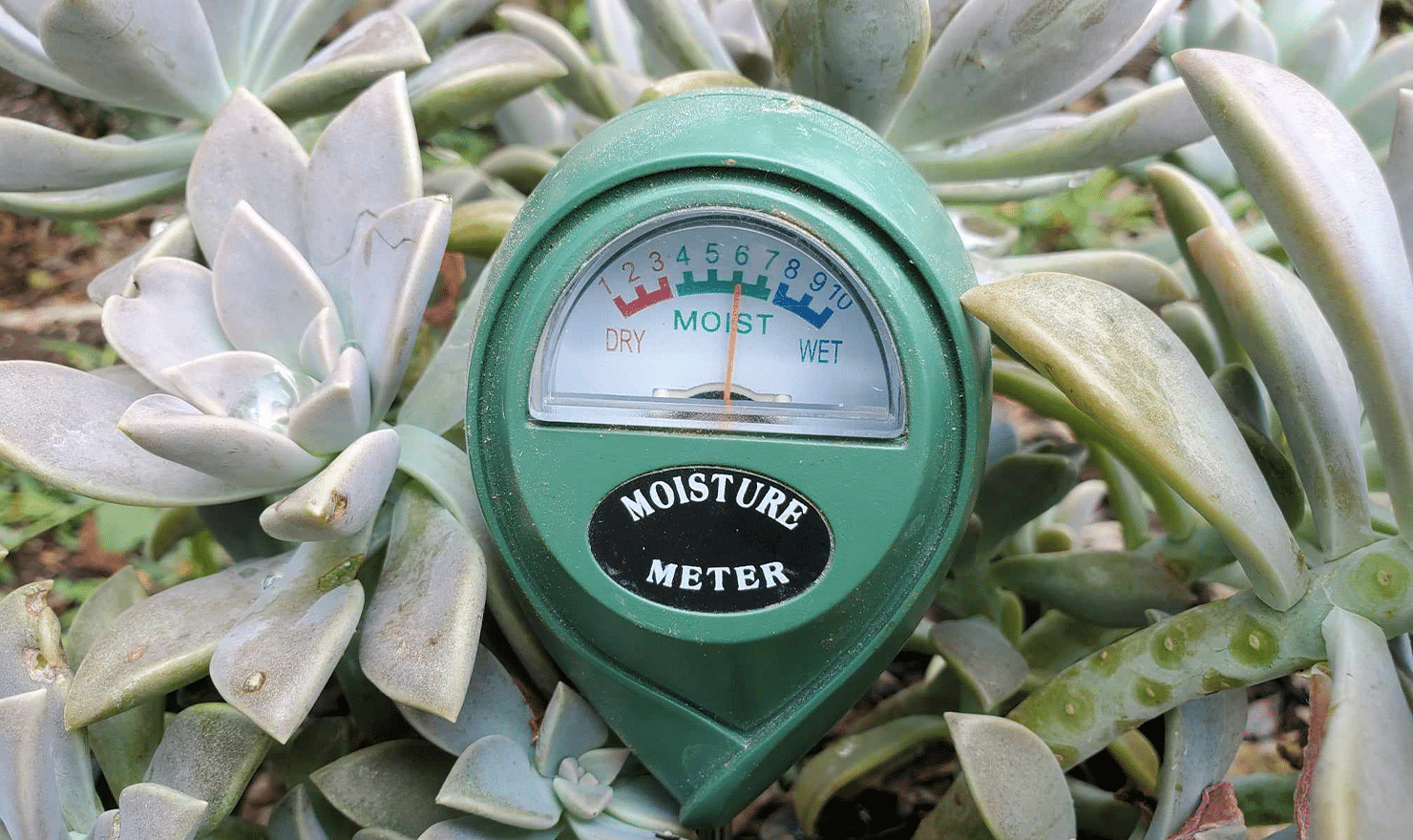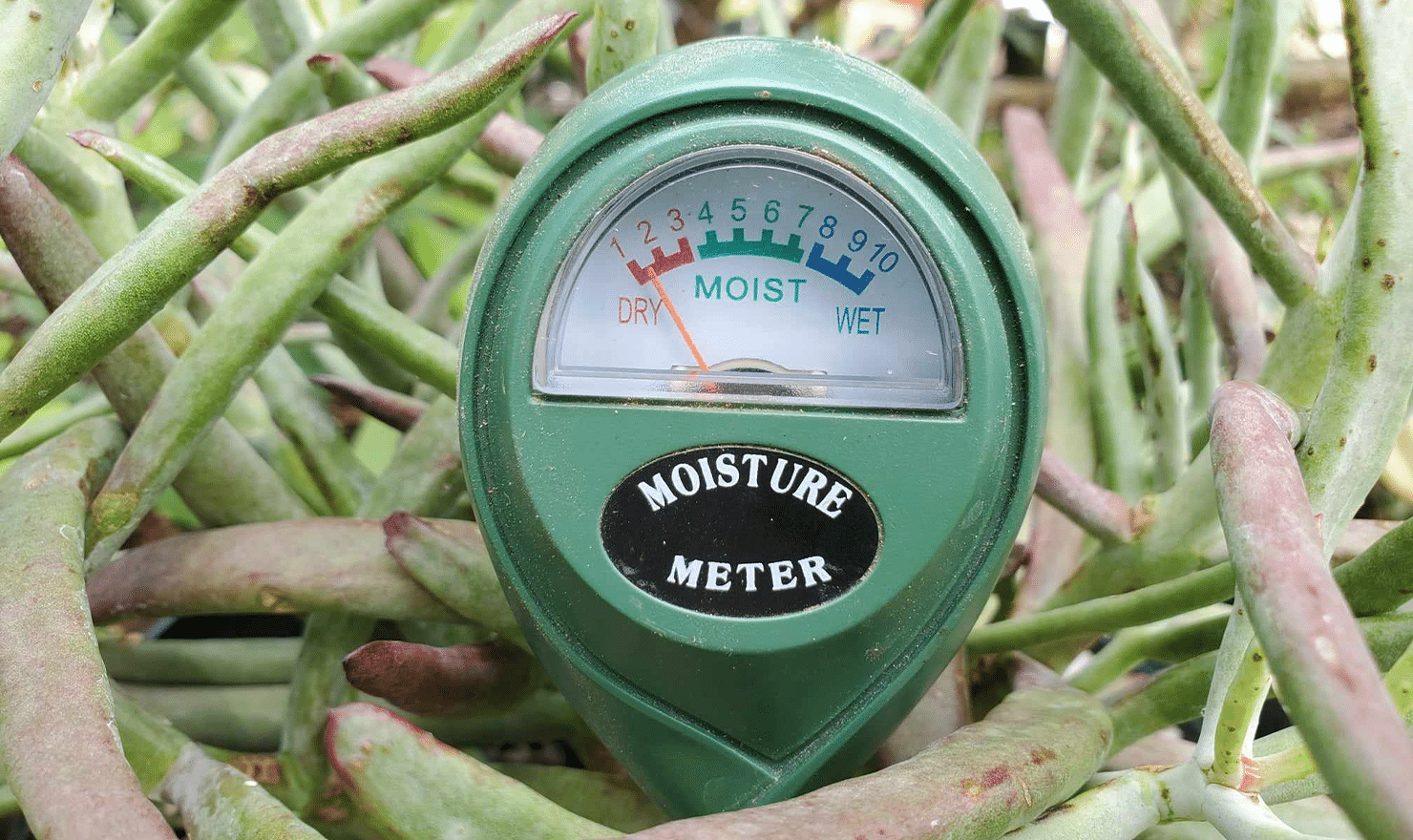FAQs
Caring for your garden
Many people ask us how to keep a succesful garden. Plants need TLC to keep looking their best. It is important to keep and eye out for bugs, apply the correct quantity and type of fertilizer, keep weeds out of the garden, keep them trimmed and plant them in correct soil and with proper light requirements. We carry several products to help you maintain your outdoor areas.
Light level, temperature and humidity will all factor in on how often to water.Always make sure the soil is completely dry several inches below the surface before adding water.
WHEN IN DOUBT DO NOT WATER!
Take the guess work out of watering using a moisture meter.

NO! DO NOT water!

YES! GIVE us some water!
Fertilize once or twice during the spring. We recommend using worm castings, liquid fish and seaweed fertilizer, and SUPERthrive.
Succulents and cacti need good drainage!
You can use cactus potting soil mix or simply regular potting soil mixed with perlite in a 1:1 ratio.
- Succulents are a group of plants that store water in their leaves. The leaves tend to be thick and fleshy with a waxy coating that helps hold the water.
- Succulents tend to thrive in dry climates and don’t like a lot of humidity. While they do need water to survive, they can endure extended periods of drought, relying on the stored water and nutrients in their leaves.
- If their roots are sitting in water for too long, they will start to rot and die.
- Most succulents prefer warm temperatures and are not able to withstand freezing. Due to the water stored in their leaves, freezing will often result in the plant dying or getting mushy leaves. However, some species of sedums and sempervivums are able to withstand temperatures below freezing.
- A cactus is a type of succulent that has spines.
- Ouch!
- They store water in their stem, roots and leaves and can live long periods of time without rain.
- If their roots are sitting in water for too long, they will also start to rot and die.
- Their sharp spines protect cacti from animals and birds.
- Many cacti have beautiful showy blooms.
- Desert plants need good drainage. Choose proper location. Berm up the area if necessary and use cactus mix.
- Dig a hole to correct depth. It should be as deep as root system and twice as wide. It must be deep enough to cover the top of root ball (where base of plant and roots begin).
- Settle plant into new hole, backfill with cactus mix and tamp gently. Install supports for taller plants.
- Water plants thoroughly with mixture of SUPERthrive and Medina Soil Activator after planting,
1/4 tsp SUPERthrive
6 tbsp Medina Soil Activator
1 Gallon Water
- Apply mixture once a week for 3 weeks, reduce to every other week for 1 month, and then monthly for 6 months.
- If there is heavy rainfall make sure the ground around root ball is completely dry before watering again.
- Mealybugs are one of the most common pests in succulents and cacti. They are tiny, elliptical insects about 2-3 millimeters long, gray or light brown in color. They get their name from the waxy or mealy white material they produce. You can treat plants with Neem oil or insecticidal soap. For heavy infestations we recommend applying a systemic pesticide.
- Scale are tiny little insects that suck the sap from plants, eventually taking away all of the essential nutrients plants need to survive. Gently remove scale with a soft toothbrush dipped in a mixture of soap, horticultural oil and water.
- Spidermites are tiny arachnids that feed on the juice of plant and leaves. They run in colonies and reproduce quickly, in one or two weeks. The eggs laid under silk webbing can hatch thousands of baby spider mites on a single leaf. Prune infested leaves and discard in the trash. You might have to pull entire plants to prevent spreading. Blast plants with a strong stream of water to wash off bugs. Insecticidal soap and neem oil can also be used on heavy infestations.
Cactus can grow in the shade but at least 4 hours of direct sun per day is best for cacti. Cacti that are starving for light will often show new growth that is distorted and weary.
In the Hill Country we often get very cold weather. From our experience these are some of the plants that have survived out winters: Yucca Rostrata, Yucca Gloriosa, Thompson Yucca, Yucca Elata, Yucca Great White, Fish hook barrel, Claret Cup, Horse Crippler, Green Sotol, Candelilla, Gopher Plant, Texas Leather stem, Artichoke Agave, Squid Agave, Montana Agave, Victoria Agave, Sedum, Iceplant and Ghost Plant.
Cacti and desert plants can live long periods of time without rain. If their roots are sitting in water for too long, they will also start to rot and die. It is extremely important to have good drainage wherever you decide to place them. The Hill Country has very heavy clay content in the soil that stores water and doesn’t allow for appropriate drainage. We highly recommend elevating or creating mounds using cactus mix to plant them.
